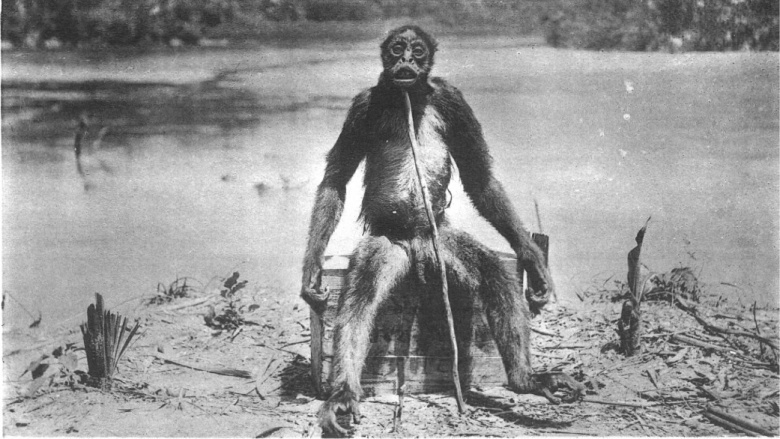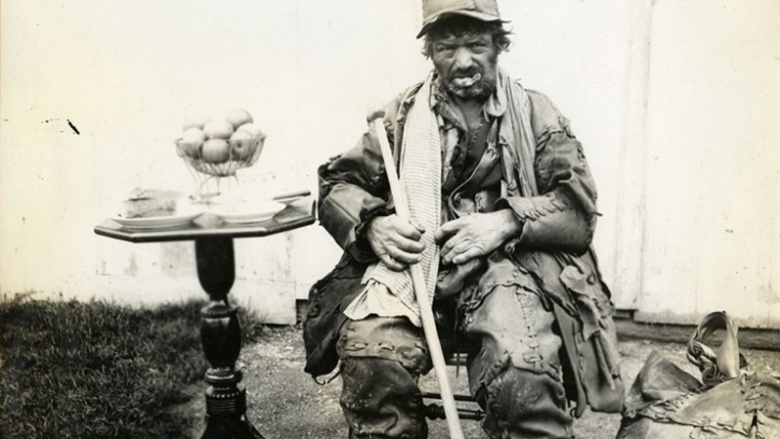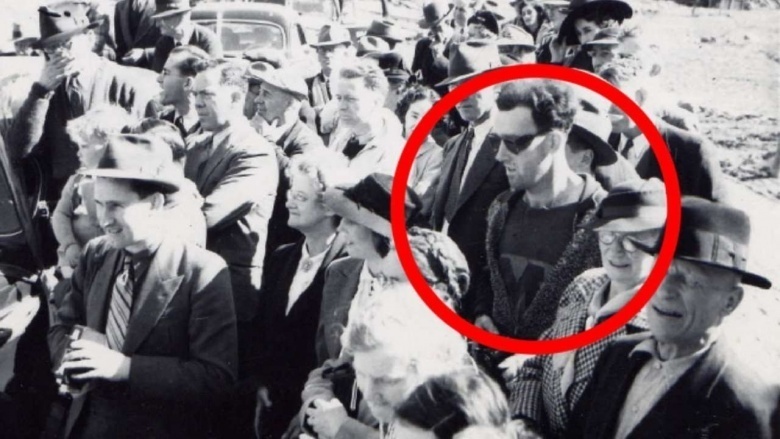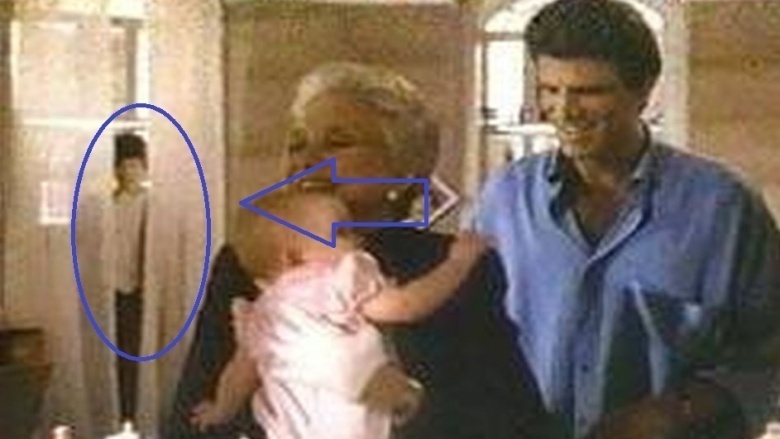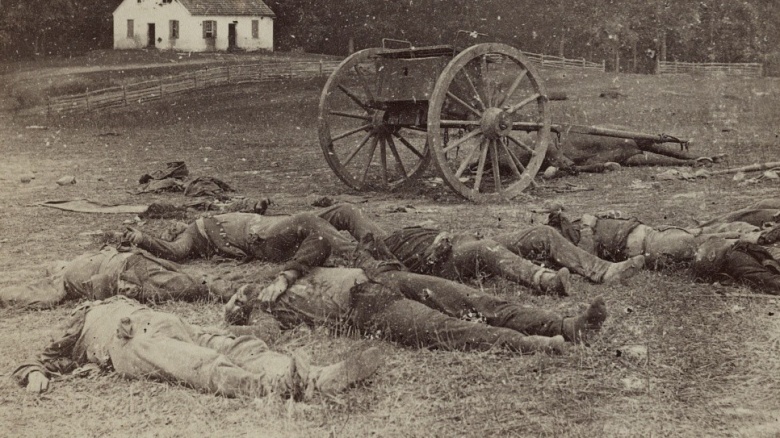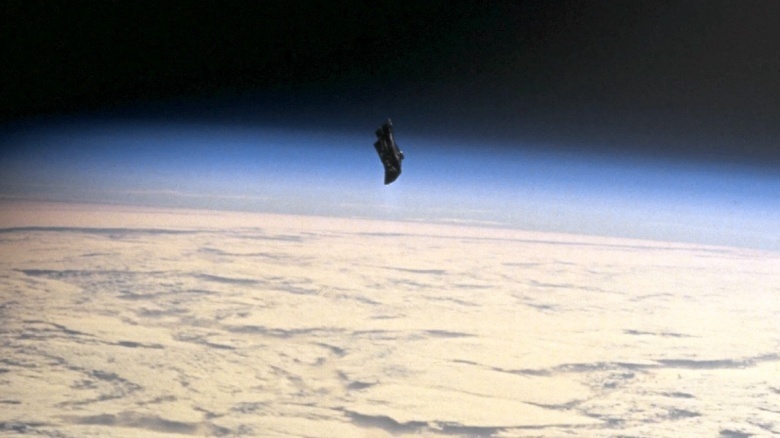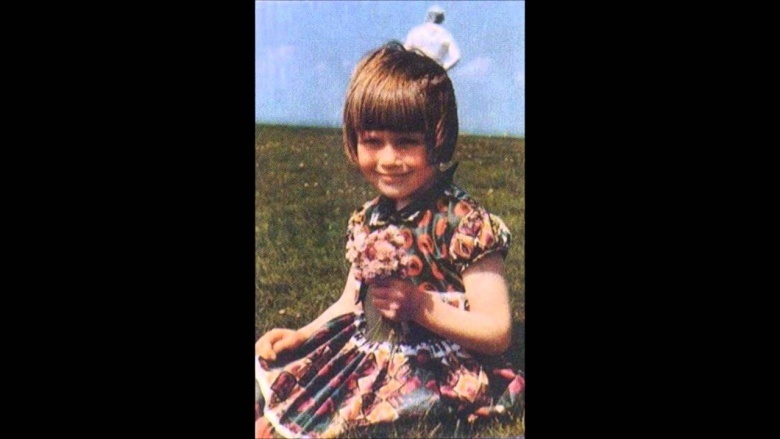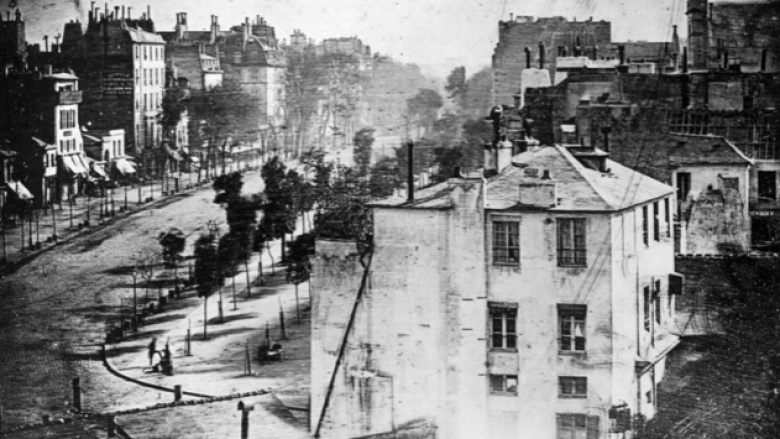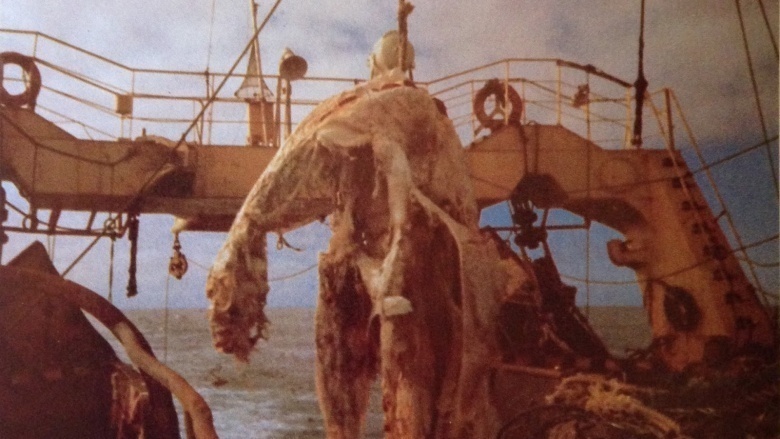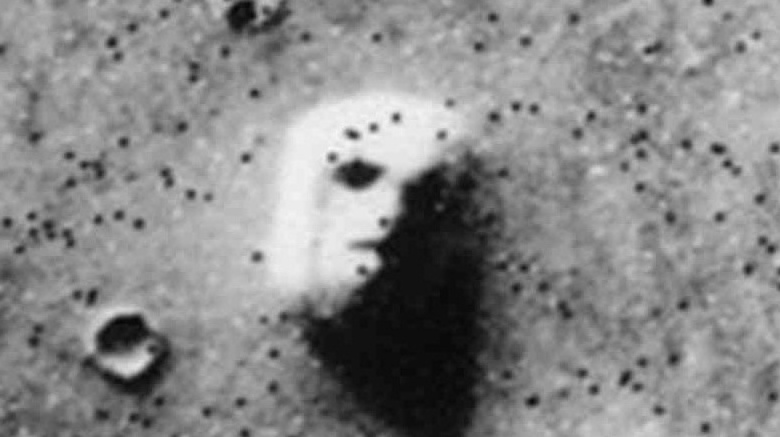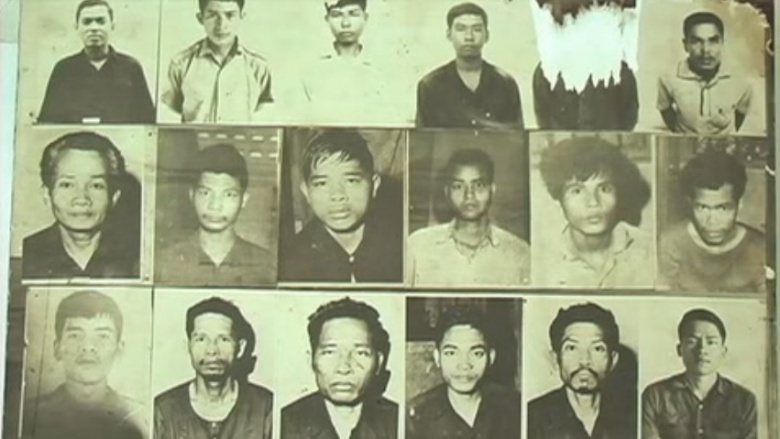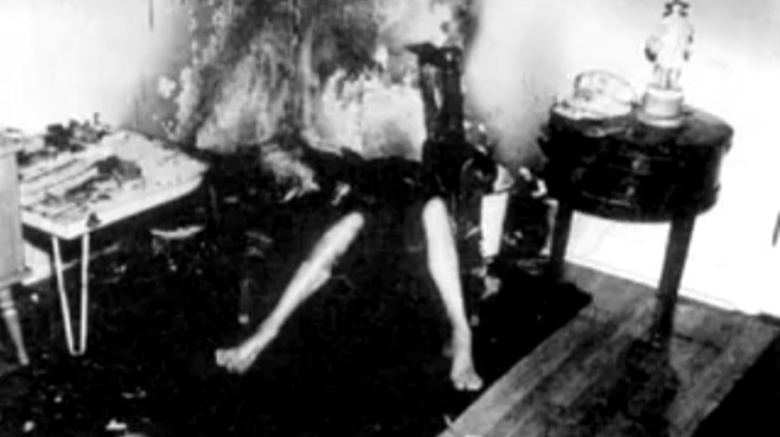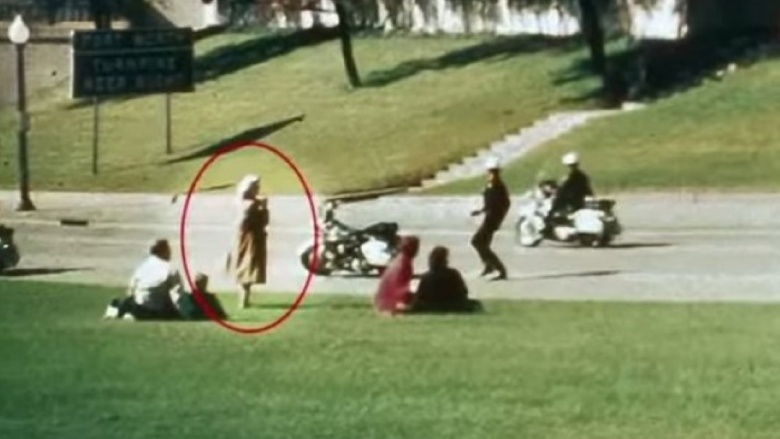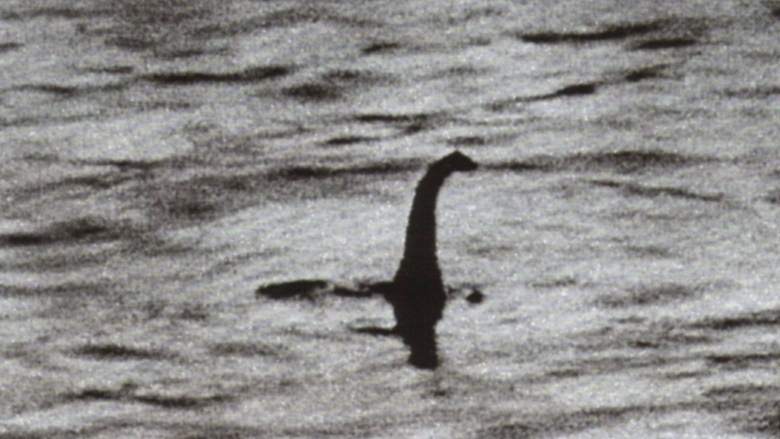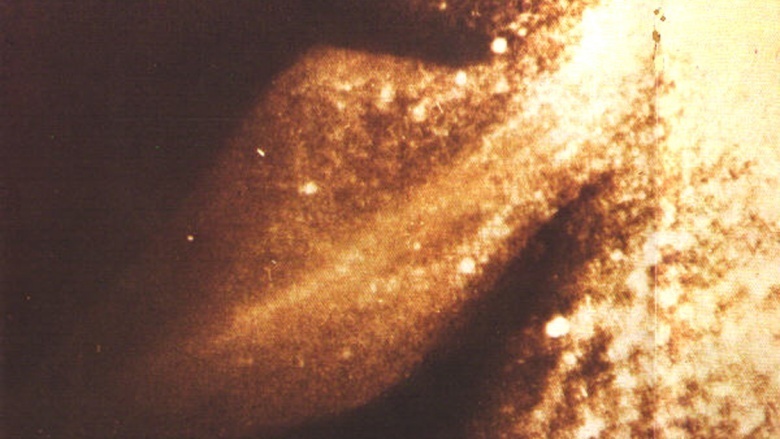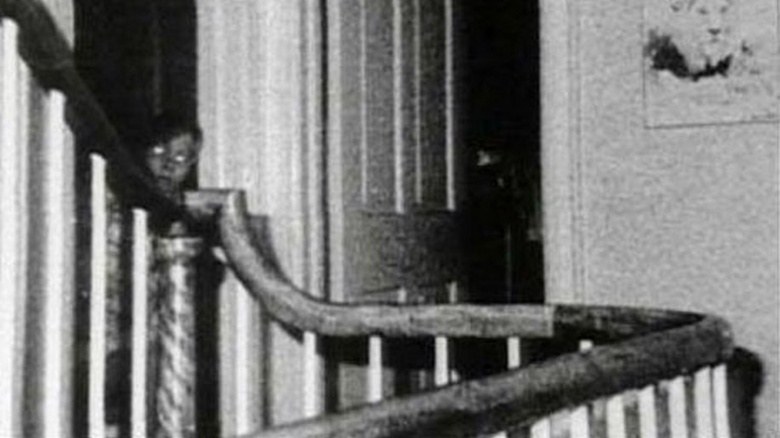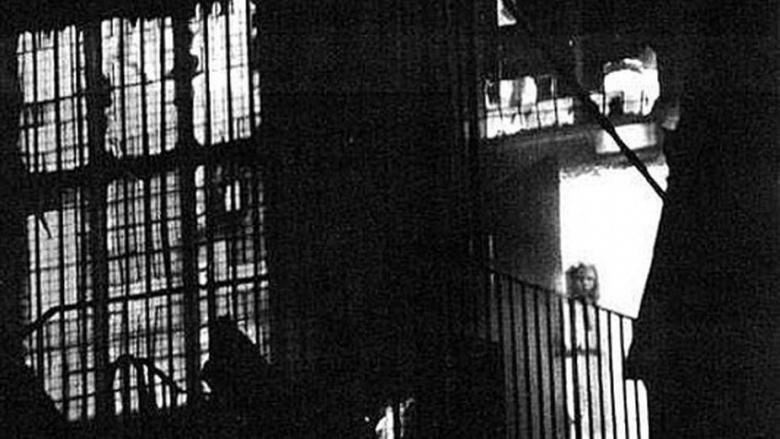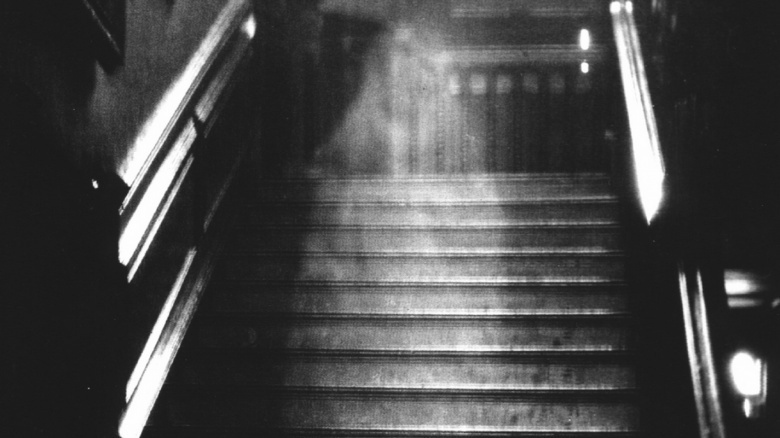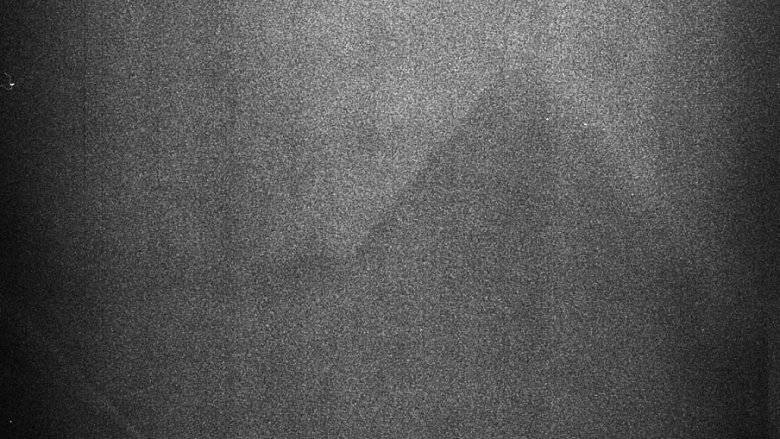These Bizarre Photographs Have Incredible Real Stories Behind Them
Humans have been trying to capture an accurate, visual record of the world around them ever since the first photograph. This includes attempts to capture evidence of the unknown. Unfortunately, for every memorable photograph of a new discovery, there are several others that chronicle cases of mistaken identity or outright hoaxes. Below are a few examples of bizarre photographs, along with explanations for each.
De Loys' ape
In 1920, a Swiss geologist named Francois De Loys allegedly encountered a pair of aggressive, humanoid apes in the jungles of Venezuela. According to De Loys, he killed one of the creatures, propped it up on a box, and took the bizarre photograph above. The animal is notable because, if real, it is the only known ape native to the Western Hemisphere.
In all likelihood, though, the animal is actually a spider monkey. Nevertheless, De Loys propagated it as a new discovery. Years later, Doctor Enrique Tejera wrote a letter to a Venezuelan scientific magazine, stating that he worked with De Loys in Venezuela, and that the animal is the photo was De Loys' deceased pet spider monkey. The photo's perspective makes the monkey appear larger that it actually was. De Loys' ape is now considered a well-publicized hoax by the modern scientific community.
The Leatherman
For decades back in the 1800s, a mysterious figure known only as the Leatherman walked a 34-day, 365-mile route through New England. Along the way, he visited 40 different towns, stopped at the same homes for no more than 5 or 10 minutes at a time, and spent his nights in caves and natural hollows. He spoke little to no English — according to those that met him, he didn't speak much of anything. No one ever knew his name, although it was said his route was so regular, people could tell the time by his appearance in town. Some schools would reward a few of their children with some time off on Leatherman Day, when they would go out to meet him and give him the food they'd collected.
The photos of Leatherman show a weathered, tired-looking man, always dressed head-to-toe in leather (which is to be expected when your mom names you Leatherman). He was never seen without the 60-pound suit (yes, 60 pounds), even during the hottest of summer days. He walked his route for around 30 years, until he died in 1889. By then, it was estimated that he had covered somewhere around 100,000 miles and met countless people, but never told anyone anything about himself.
According to legend, the Leatherman's real identity was Jules Bourglay, once a well-to-do French merchant. After the financial ruin of his family and the disintegration of his relationship, he fled to New England where he walked ... and walked ... and walked some more. It's a great story that's also been absolutely debunked, and even attempts at finding out more about him after his death have failed. In 2011, the Leatherman's resting place was exhumed with the dual purpose of burying him in a proper cemetery, and taking some DNA in hopes of getting some clues about who he really was. The exhumers ran into one tiny, creepy obstacle, however: the grave was empty.
The Tianenman Square Tank Man
Not every mysterious photo is old, or even obscure. Take this ultra-famous shot from June 4, 1989, by photographer Jeff Widener, who captured the most iconic image of China's Tienanmen Square protests. A lone figure, wearing a white shirt and carrying a few shopping bags, stands in terrifying opposition to a line of tanks bearing down on protesters. And yet, decades later, no one knows who the man was. No family has stepped forward. While that might be at least a little understandable, we don't know anything about the crew in that first tank, either. The tank crew was never identified, their families have never stepped forward, and as Widener told the BBC, it was as if everyone involved in the photo simply disappeared.
There have been many theories about what happened to the man. Some say he was a student who left the country not long after his incredibly brave stand, escaping to Taiwan. Other say he was executed, with the whole thing made even more mysterious by the lack of information about whoever pulled him away from the tanks just after the photo was taken. Some say he was arrested, while others say that he was yanked away by a crowd who protected him from the military. When all's said and done, we know absolutely nothing about one of the most iconic photos of the 20th century.
A time-traveling hipster
Around 2010, this bizarre photograph of a crowd at the 1941 reopening of the South Fork Bridge in Canada (apparently, there wasn't much going on that particular day) began making the rounds on the internet. The photo's pretty unremarkable, except for a young man standing in the crowd, wearing a shirt with a logo, sunglasses, and holding a small camera. His appearance is more what we expect from modern hipsters, not bridge-reopening onlookers from the 1940s.
The conclusion is clear — he must be a time traveler! A time traveler with no regard for the space-time continuum, apparently, considering he made no effort to blend in, whatsoever. Also, he had access to all of time, and he decided to see a bridge being reopened in Canada. Dinosaurs and ancient Rome must not have the draw we expected.
As it turns out, there's nothing about his appearance that is impossible for 1941. His shirt, camera, and sunglasses were all available to be purchased — these items just weren't commonplace. The only thing futuristic about this photo is his foresights into hipster fashion.
Ghost boy in Three Men and a Baby
Perhaps the most memorable aspect of the saccharine 1987 film, Three Men and a Baby, is the urban legend about a real-world ghost that appears in the movie. During a scene between actor Ted Danson and actress Celeste Holm, the camera briefly pans across a room. Near a window, you can see a figure that looks to be about the size of a child. The urban legend states that this is the ghost of a boy who died in that house.
In reality, it's simply a cardboard cutout of Ted Danson in a top hat. The cutout is part of a subplot that director Leonard Nimoy (yes, that one. Spock) removed from the final film. That being said, we think a cutout of Ted Danson wearing a top hat is almost as macabre as the ghost explanation.
Alexander Gardner's Civil War photos
Scottish photographer Alexander Gardner wasn't just the first person to wade into the bloody aftermath of battle with a camera, but also the first to bring up some incredibly uncomfortable questions. Gardner and his equipment headed to Sharpsburg in 1862 to document the aftermath of a Civil War battle that left around 23,000 people dead. When his photos went public, they brought the horrors of war to the front page of every city, no matter how far from the front lines they were. The reaction was immediate, and the next year, he headed to Gettysburg to do the same thing.
Only this time, we're not so sure what the story behind his photos is. By the time the photographer and his associates got to Gettysburg, the battle was long over. So long over, in fact, that most of the bodies that hadn't been buried were in various states of decomposition. Gardner needed to get his shots, though, so he started moving some of the bodies to stage what would become some of his most famous photos. Gardner's deception was only discovered in 1975, when researchers realized that the description of the photo and Gardner's account didn't match what the photo (and the uniform) of the dead man actually said. How many of these early wartime photos are real, and how many were carefully staged for the camera for maximum effect? We have no idea.
Black Knight Satellite
The Black Knight satellite is a 13,000 year-old object — possibly of alien origin — that conspiracy theorists contend orbits the Earth. So why haven't you heard about it? Because the government is hiding it from you, of course! In 1998, the space shuttle Endeavour took the above photo — was this the mysterious Black Knight object in orbit? Was it about to project its alien death rays onto the Earth's surface?
Actually, the object is a thermal blanket that the astronauts lost during an EVA mission, and that burned up in the atmosphere. It looks like humanity is safe from the blanket's evil plans to increase its mass exponentially and cover the Earth with dangerous coziness.
The Solway Firth spaceman
One summer day in 1964, an Englishman named Jim Templeton snapped this shot of his daughter, Elizabeth, while on a family outing near Solway Firth in Cumbria, England. Neither Templeton nor his wife, Annie, noticed anything unusual while taking the photo, yet they discovered a strange figure in the frame, behind their daughter, after they developed it. The figure appears to be someone — or something — wearing a spacesuit.
The photograph made world headlines, and attracted UFO aficionados. Was this figure an extraterrestrial photobomber? Perhaps it was a nosy, phantom beekeeper? One peculiar aspect of the photo is that, based upon how the spaceman's right arm is bent, he has his back toward the camera. Why, then, is the helmet facing the camera? Did he wear it backward that day? Clearly, we're not dealing with the top brass from Planet X.
Fortunately for our extraterrestrial brethren's reputation, the bizarre photograph has a more Earthbound explanation. The "spaceman" is actually Templeton's wife, Annie, facing away from the camera. Most likely, Annie walked into the photograph and Jim failed to notice her. Another picture from the same day shows that Annie was wearing a blue dress. The photo in question is overexposed, which makes Annie's outfit appear white. (Either that or it's a very stealthy beekeeper.) That's still no excuse for not recognizing your wife when you see a pic of her, buddy.
Louis Daguerre's first photo
In 1838, Louis Daguerre took the very first photo of a person, in pretty much the same way that we end up with people in our photos: by accident. The picture had a seven-minute exposure time, and during those seven minutes, a single person stood still long enough to have his image captured on film. He was having his shoes shined, and was unknowingly immortalized forever.
Needless to say, we have no idea who this mystery man is. The shot is of a street corner in Paris of the Boulevard du Temple, and close examination of the photo shows hints of what appear to be other people (even back then, du Temple was a busy, bustling place), but no one was as stationary as the shoe-shine man. There might be hints of a child's face looking out of one window, and some suggest that a boy is hanging out with his dog on the side of the street. Unfortunately, modern methods and technology can only get us so far without the backup aid of a time machine.
Zuiyo Maru carcass
In 1977, a Japanese fishing trawler named the Zuiyo Maru pulled a carcass out of the sea near New Zealand. The crew snapped a few photos, and collected some tissue samples, before throwing the rotting hunk of flesh overboard. At first glance, the carcass appears to be the rotting remains of an aforementioned plesiosaur. The long neck and head notably look similar to our popular conception of Not-Nessie. The tissue samples, however, revealed that what the fishermen pulled out of the ocean was likely the remains of a basking shark, the world's second-largest fish. The corpse of a basking shark decays in such a way that, at first glance, resembled the remains of a plesiosaur. Though plesiosaurs probably tasted better.
The face on Mars
In 1976, NASA's Viking I spacecraft took a photograph of what appears to be a humanlike face, made of rock, on the surface of Mars. The photo became a tabloid phenomenon once NASA released it to the public. Was the face evidence of an extraterrestrial civilization? Well ... no, it's simply an optical illusion created when light hit the rocks in a particular way. More recent, higher-quality pictures show the rock formation to actually be quite unremarkable.
Seeing patterns in objects is an example of pareidolia — the brain's way of creating order out of chaos. It's why we see shapes in clouds, or a face in the Moon. Unfortunately, it doesn't explain why people continue to find value in Adam Sandler movies.
The unidentified victims of the Khmer Rouge
The reign of the Khmer Rouge only lasted for four years, but for those who lived through it, it must have felt like an eternity of bloodshed and death. The regime was attempting to overhaul an entire society, creating a Cambodia with no rich, no poor, and no inequality. Doing this meant a complete destruction of society as it existed, and ultimately the deaths of somewhere around two million people. Many died from disease, starvation and overwork, while others were imprisoned, interrogated, and finally executed in facilities like S-21. Around 14,000 people passed through the prison in the late 1970s, and only 12 survived. (Some accounts say only seven survived.)
S-21 was a building once known as Tuol Svay Pray High School, before it was renamed and repurposed in 1976. Journalists entered the prison in 1979 after its fall, and discovered walls covered with countless photos of the people who had been imprisoned and ultimately killed there. The photos were part of a relentless documentation of all the killing that had gone on, and were proof that the plans of the Khmer Rouge leaders were being carried out. Most of the photos are of people who will never be named, whose surviving relatives have little hope of finding the photo of their loved ones, buried in the thousands and thousands of photos that have been found. More have been destroyed, and those that still exist serve as an eerie reminder of the horrors that went on behind the closed doors of the Khmer Rouge.
Helen Conway's spontaneous human combustion
This photo's pretty graphic, made even worse by the first few seconds where you're not entirely sure what you're looking at. Pennsylvania resident Helen Conway died of, well, exploding, in 1964 — according to the fire marshal, it only took 21 minutes for the fire to burn so completely, all that was left of her was her legs. Her death is usually advertised as a real case of spontaneous human combustion, and while we're not entirely sure that's a legitimate finding, it's undeniable that the photo is a creepy look at what must have been a terrible end.
First, the down-and-dirty facts. Under normal circumstances, a body takes 2-3 hours to burn, and that's at a temperature of 1,100 degrees Fahrenheit (593 Celsius). It's a big jump from that to just 21 minutes, and even with nothing paranormal or supernatural, there's some seriously weird science stuff that's definitely happening.
Since the number of supposed cases of spontaneous human combustion are thankfully limited, we have little idea what actually happens. According to experts, this weird occurrence can be fueled by the body's own fatty tissue, rendering as it burns and fueling an incredibly hot fire. It's also been described as a sort of reverse or inside-out candle, which is the last thing we want to think about the next time we light a candle. In Ms. Conway's case, the initial spark was likely provided by a cigarette, which she was well known to be fond of (and careless with). It's the best theory we've got, and that really doesn't make the photos any less unsettling.
Umbrella Man and Babushka Lady
Few events in American history have hatched as many conspiracy theories as the assassination of President John F. Kennedy, and conspiracy theorists of all sorts point to two mysterious figures captured in photographs of the motorcade before, during, and after the fatal rifle shots were fired.
The first is the so-called Babushka Lady, who remains unidentified in spite of the passing of decades. In the photos, she is either taking pictures of what's going on around her, or behaving in what seems to be an incredibly erratic way. It wasn't until 1970 that Beverly Oliver claimed she was the Babushka Lady, but her film and photographs have never surfaced, and her claims are unsubstantiated.
Other conspiracy theorists point to the Umbrella Man. That day in Dallas was sunny and clear, even though it had rained the night before. At the point where Kennedy's car comes under fire stands a man holding an open black umbrella. It's been argued that he was sending a signal to the gunmen, and even more outlandish theories claim there was a gun hidden in the umbrella's mechanism. It's something so weird and, outside of Batman comics where the Penguin terrorizes Gotham, so unlikely, it seems like there just has to be some sort of dark explanation for the man's actions.
The man in question was (supposedly) named Louie Steven Witt, and he responded to requests to come forward and explain himself before Congress. But his testimony — that the umbrella was raised in protest to the policies of JFK's father, and it represented the same umbrella that Neville Chamberlain was often seen carrying –makes for some incredibly weird watching, especially when everyone starts laughing at the whole silly concept. Great comedy rarely doubles as great reality.
The Cash-Landrum incident
We've heard enough tall tales of UFOs and extraterrestrials to take any claims with a healthy bucket of salt, but the photos taken in the wake of what's been dubbed the Cash-Landrum incident could make even the biggest skeptic admit something weird's going on here.
On December 29, 1980, Betty Cash, Vicki Landrum, and Landrum's young grandson Colby, were driving not far from Houston, Texas, when they saw a bright light in the sky. According to their account it was nighttime, but the sky was as bright as day. Because this was Texas, and Texans don't take any sort of garbage from anyone, they stopped the car and got out to see just what in tarnation was going on. They later reported that the light was coming from a giant craft flanked with 20-25 smaller, helicopter-like machines.
After roughly 10 minutes of looking up at the craft, they got back into the car — when they got home, everyone felt sick. The photos taken by doctors after their encounter show burns and sores, along with patches of missing hair. Doctors' reports also record weight and appetite loss, vomiting, stomach pains, and damage to their eyes and skin.
Something happened that night in Texas, and one theory is that the women stumbled across a top secret military operation, perhaps the transportation of an atomic weapon, that went terribly wrong. Whatever happened to them, it caused severe injuries clearly documented in the photos, and left them all with health issues that continued to plague them for decades.
The surgeon's photograph of the Loch Ness Monster
For decades, the famed 1934 "surgeon's photo" served as evidence to some that the Loch Ness Monster existed. The picture's name comes from the British doctor, R. Kenneth Wilson, who allegedly took the photograph while visiting the Scottish lake. The photo shows an animal that looks like a plesiosaur — an extinct, long-necked reptile — rising out of the water, except in 1994, investigators revealed that the surgeon's photo is a hoax. The hoaxers constructed a miniature head and neck, mounted it onto a toy submarine, took the photo, and submitted it to the London Daily Mail newspaper for publication. The uncropped version of the image makes their fraud a bit more obvious. If that's not enough proof of the truth, plesiosaur fossils show that it would have been physically impossible for one to extend its neck up and out of the water like in the photo.
The Loch Ness Monster's flipper
Here's another alleged photo of our favorite Scottish plesiosaur, Nessie. In 1972, Dr. Robert Rines took this underwater photo in Loch Ness, which purports to show the fin of the eponymous monster. The photograph is exciting at first glance and, aside from the Surgeon's Photograph, it's perhaps the most-cited photographic evidence of Nessie.
Unfortunately, the photo is extremely misleading. As you can see, there is nothing in the photo that differentiates it from the bottom of an empty loch. Rines explained it away by claiming the picture was "improved by enhancement." The original version is here, and somehow manages to show even less.
Rines was an ardent Nessie enthusiast, so it stands to reason that he may have seen the monster when no one else could. His motivations, however, much like with the original photo, are unclear.
Amityville ghost boy
In 1974, Ronald "Butch" DeFeo shot and killed his parents, and four siblings, in their house in Amityville, New York. One year later, the Lutz family moved into the vacant home. Shortly thereafter, the Lutz family reported being tormented by supernatural forces. The house, it seems, was haunted by demons and/or ghosts that made Butch DeFeo commit his grisly crimes. Their story served as the basis for the popular 1976 book, The Amityville Horror, and a later series of movies by the same name.
One piece of evidence for the hauntings is the above picture of a spectral child roaming the house, allegedly taken by a group of psychic researchers. Was this the ghost of a member of the murdered DeFeo family? The photo is indeed creepy, but there is a fatal problem with it — the Amityville story is a total hoax. The Lutz family and Butch DeFeo's defense attorney, William Weber, invented the haunting. The Lutzes hoped to gain monetarily, while Weber wanted to use the story to bolster DeFeo's plea of not guilty by reason of insanity.
So, where does this revelation leave the photo? Some contend that it's actually paranormal investigator Paul Bartz, who was exploring the house that night, along with Ed and Lorraine Warren of The Conjuring fame. Really though, is who the photo depicts even relevant, given that the underlying story is 100% false?
The Wem ghost
In 1995, Tony O'Rahilly watched from across the street as the town hall of Wem in Shropshire, England burned to the ground. Seizing on the moment, he decided to take a photograph. After he developed it, he noticed the strange apparition of a young girl standing in the doorway of the burning building. Some say this ghostly figure is Jane Churm, who started a similar fire at the town hall in 1677. Clearly, the problem here is town halls.
The picture had its supporters and detractors over the years, until 2010, when the Shropshire Star newspaper finally revealed the the truth. A reader discovered that the little girl in the photo is the same as one prominently featured in the lower left corner of a 1922 Wem postcard. A side-by-side comparison of the two images shows they are indeed the same. So, either there's time travel at work here, or O'Rahilly incorporated this image into his photo for ... who knows why, really. Sadly, O'Rahilly passed away in 2005, so his motivation for doctoring the photograph is the only unsolved portion of this mystery.
The Brown Lady of Raynham Hall
This famous picture, which first appeared in Country Life magazine in 1936, supposedly shows a ghost called the Brown Lady of Raynham Hall, located in Norfolk, England. The Brown Lady is said to be the ghost of Dorothy Walpole — the sister of Great Britain's first prime minister, Sir Robert Walpole — who died in the house of smallpox in 1726. Since then, she haunts the grounds like any self-respecting ghost should.
The photograph itself, as with many pictures of the paranormal, had its skeptics and champions. It wasn't until 2006 that a researcher, Alan Murdie, discovered the truth inside an old folder in Cambridge University Library. The folder contained the results of a prior investigation i
The Hessdalen Lights
At the first sign of strange lights in the sky, it's the knee-jerk reaction of countless people to claim that we're clearly being visited by extraterrestrial beings that have their probes ready and waiting for some fresh human subjects. We've heard it a million times, but there are some lights over Norway that are just plain strange. We're not saying they're aliens, but we do think that aliens might be preferable to some of the theories about what's causing them.
The lights are named for Norway's Hessdalen Valley, where they started appearing in 1981. For three years, they were a pretty frequent occurrence in the night sky. The weekly reports from locals were frequent enough that an automatic monitoring station was finally set up in 1998, which keeps busy to this day. The lights usually appear between 9 PM and 1 AM, they're more likely to show up during the winter months, and when they do appear, the globes of light can take on an array of colors and formations. There's no doubt as to their existence, as they've been captured in countless photos by scores of different people.
There are tons of theories on just what they might be, and those theories range from a manifestation of the world's psychic consciousness to the idea that they're electrical discharges from pressure that's built up between the area's quartz deposits. Another theory is particularly terrifying: that they're coulomb crystals, which are supposedly formed when radon rises into the air by hitching a ride on dust particles, then gives off alpha particles. We'd rather it was aliens, honestly, because alpha particles have been linked to the development of several different types of cancer when they're absorbed into the body. Aliens? They just probe you and leave.
Ben Guggenheim and Victor Giglio
Stories of the survivors and of the dead on the Titanic have been told time and again, but with the recent discovery of the only known photograph of one of the men who died on the ill-fated voyage, we're realizing how little we know about the disaster, after all.
Among the list of passengers who died on board the ship were millionaire Ben Guggenheim and his valet, Victor Giglio. It was Guggenheim who uttered the most famous words of the disaster, stating, "We've dressed in our best and are prepared to go down like gentlemen." And that, by all accounts, is exactly what they did. They refused spots on the life boats, dressed up all fancy-like, and retired to the dinner room to await their fate. No real reason behind their actions has ever been given — usually, they're painted as sacrificing heroes who gave their lives for others. They're the embodiment of a sort of honest stoicism in the face of what had to have been one of the most horrific moments of the day.
Countless photos of Guggenheim exist, which isn't surprising. His valet, however, is another matter, and it was only in 2012 that a bizarre photo of Giglio at boarding school surfaced. The photo raised more questions than answers, and it's made their sacrifice not as clear-cut as it once was. Giglio's dark skin has made historians suspect that he wouldn't have been allowed on a lifeboat, and that Guggenheim chose to remain behind and die with his friend than go on without him. That's just as noble as the "dinner best" theory, though at least ten times as sad.
Apollo 17 pyramid
Apollo 17 was the final mission of NASA's prestigious lunar program, and the last time human beings landed on the Moon. The mission is also notable for some excellent photographs of the lunar surface. Of all these quality photos, the one that stands out for some is the above grainy image of what looks like a pyramid. What, did the ancient Egyptians colonize the Moon, or are there wacky extraterrestrials at work?
You can find the original image, along with all the others taken by the Apollo 17 astronauts, on NASA's website. Most of the versions you see on the internet have been enhanced in some way, and therefore make the "pyramid" stand out. NASA labels the photo "LRV Floor? Sunstruck," which means that it's an image of the floor of the Apollo Lunar Roving Vehicle, and it was affected by sunlight. Is there any evidence for this? The photo that preceded it shows the LRV floor. So does the one before that. The next clear picture also shows the LRV. Notice that several of these photos are being negatively affected by light.
So, what's more likely: that there is an ancient, man-made pyramid somewhere on the Moon that the government is hiding from us, or that it's just a low-quality image of the LRV's floor? We'll let you decide, but the answer is the second one.
